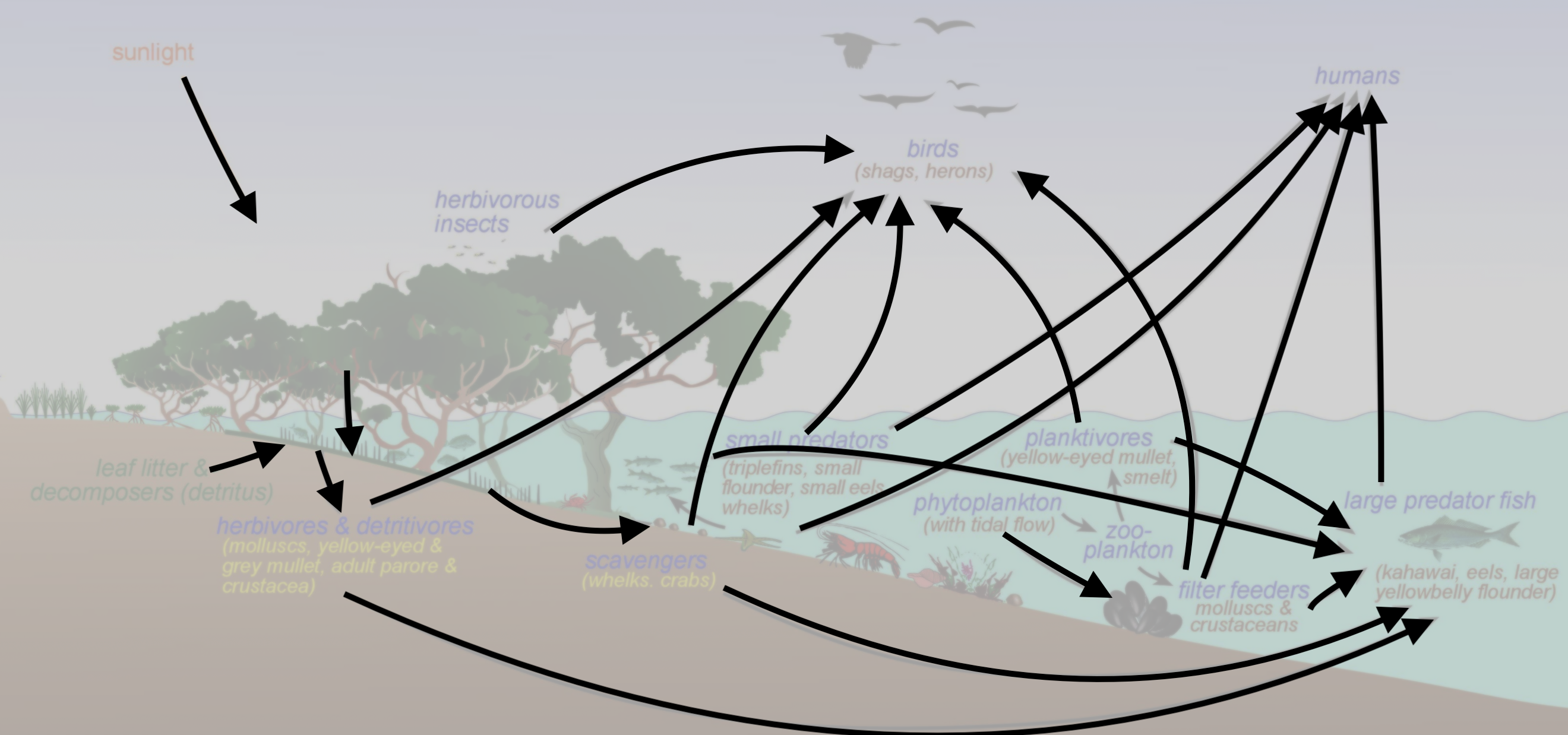Pollution can destabilize the complex connections and cycles that keep ecosystems healthy and support life.
In this article, we’ll explore:
- What Is An Ecosystem?
- What Are Some Types Of Pollution That Threaten Ecosystems?
- Why Care About Ecosystem Pollution?
- What Can Be Done About Ecosystem-Level Pollution?
What Is An Ecosystem?
An ecosystem is an interconnected group of living and non-living things in a given environment. Connections within ecosystems are things like food webs and nutrient and energy cycling relationships.
Ecosystems may be able to maintain or return to stability if they are disturbed by polluting events. However, if the severity of the disturbance is very large it may destabilize an ecosystem – sometimes permanently.
What Are Some Types Of Pollution That Threaten Ecosystems?
Municipal Wastewater
Pharmaceuticals and household chemicals can enter aquatic ecosystems through municipal wastewater, though their biological activity in wildlife is not yet fully understood. Often they are present in such small concentrations that they are not lethal to organisms in the waters that receive the discharge. However, they do have the potential to cause harm even in these small concentrations by changing animal behavior and food web dynamics.
Endocrine disruption can be triggered in aquatic wildlife by wastewater carrying chemicals released from detergents or plastic products, as well as pharmaceutical estrogenic compounds. Wastewater effluent containing endocrine disruptors that was released into a stream in Colorado altered reproductive differentiation of white sucker fish, changing their natural male to female sex ratios (reducing the presence of males by about half), and creating intersex individuals that were not present in the control site.
Eutrophication
When excessive nutrients (eutrophication) are carried via runoff into lakes or along coastlines it can take years for these ecosystems to recover. Eutrophication alters nutrient cycles (such as in Chesapeake Bay), and can permanently change habitat structure and food webs when benthic habitats become overgrown with primary producers.
The potential for runoff to be harmful to coastal waters increases when streams drain watersheds that pass through major population centers, logging, agriculture, or mining regions, and when the runoff enters the ocean through enclosed bays or shallow lagoons.
High amounts of nutrients entering coastal waters is also one of the factors causing the formation of harmful algal blooms (HABs), which can be damaging to ecosystems through the creation of “dead zones”. A dead zone is created via decomposition of the algae in the bloom, which depletes oxygen in the water and can harm or kill residing shellfish and finfish.
Invasive Species (Biopollution)
Living things have the potential to cause harm when they are introduced, either intentionally or unintentionally, into ecosystems where they are not native. Invasive species often inflict harm by their ability to grow and reproduce quickly, thereby outcompeting native species for resources and potentially altering food webs.
A striking example of biopollution is the European zebra mussel, which has become invasive to fresh waters in North America. Not only do they compete with native shellfish species for space and food (plankton), but because of their abundance and filter feeding habits they make the waters they invade more clear than before their introduction. This allows sunlight to reach depths it otherwise wouldn’t have, which has ecosystem implications like overgrowth by aquatic plants where suitable light now reaches, and toxic algae blooms.
Noise
Anthropogenic noise pollution in oceans is recognized by the United Nations for its potential to negatively impact marine organisms. Orcas alter their feeding behaviors in the presence of marine traffic noise and seismic surveys used to prospect for marine oil can kill zooplankton within a range of 1.2 kilometers (sampling didn’t extend beyond this distance in the study).
Changes like these – to the ability of predators to feed in a given area, or to the biomass at the base of food webs – have the potential to ripple into ecosystem-level effects if the damage is severe enough.
Artificial Light
Natural light regimes provided by the sun and moon are closely linked to the life cycles of terrestrial and marine organisms. Artificial lighting in marine ecosystems can:
- Interrupt communication of organisms that use light for messaging
- Influence the outcome of predator-prey interactions
- Cause disorientation when navigating
- Disrupt maturation and reproduction events that are synchronized to natural light cycles
Why Care About Ecosystem Pollution?
Ecosystems play essential roles in our lives, called ecosystem services, that support our basic human needs for things like food, water, culture, and recreation.
You may have experienced some ecosystem disruptions close to home. Pollution in aquatic ecosystems can make it unsafe to swim or eat seafood like algae or shellfish harvested from the environment. You might also notice biodiversity composition or ecosystem functioning changing over time in the recreational places you enjoy.
What Can Be Done About Ecosystem-Level Pollution?
Pollution to ecosystems is often the cumulative responsibility of citizens, government, and industry, requiring complex sociopolitical solutions.
Some things you might consider on the individual level to support your local ecosystems are:
- Educate yourself about how you may unknowingly be contributing to the spread of invasive species. The Nature Conservancy has a helpful guide to reduce the spread of invasives, and organizes invasive species removal in sensitive ecosystems.
- Don’t flush expired medications. Look for a local drop off in your area that can handle proper disposal.
- Obtain proper permitting for any projects that will generate runoff into local streams or rivers.
- Reduce your contribution to outdoor lighting pollution by checking out The International Dark Sky Association.
